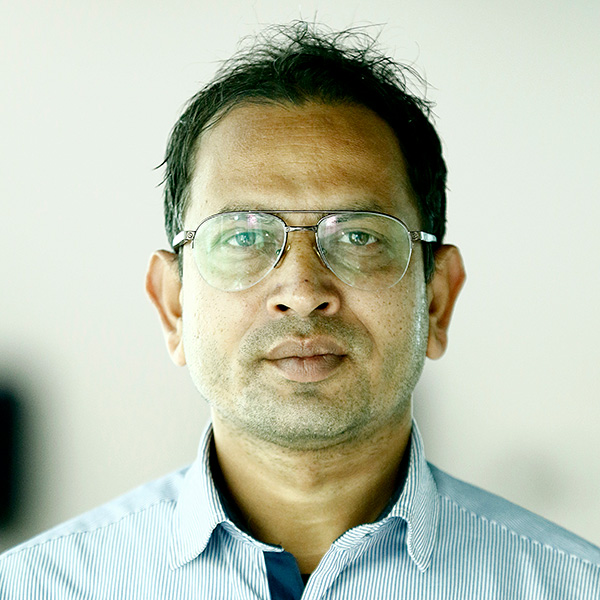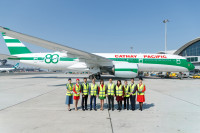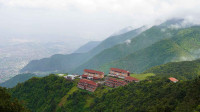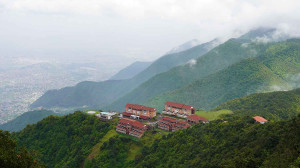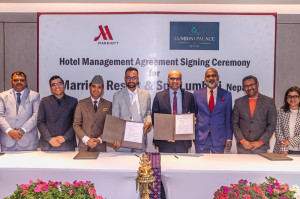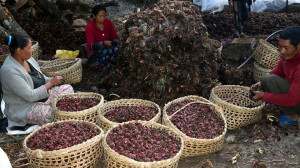Money
After 18 years, GMR proceeds with Upper Karnali hydropower works
With tenders issued and legal hurdles cleared, the 900MW project moves forward, but faces a setback as Bangladesh cancels the power purchase deal.
Sangam Prasain
Nearly two decades after it was first proposed, Indian multinational conglomerate GMR has finally started the process for construction of the 900-megawatt Upper Karnali Hydropower Project.
The long-delayed project, first envisioned in 2006, took a big step forward on July 8 when GMR Upper Karnali Hydropower Ltd invited bids for construction works.
According to the tender notice, the project has been divided into three major packages. The first involves the construction of a 2,431-metre-long access road tunnel. The second concerns the design and construction of a 150-metre RCC/steel bridge over the Karnali river near the dam site. The third covers access roads at the headworks site, spanning roughly 7 kilometres.
The bid submission deadline is July 31.
Kulmeet Kultar Sharma, the project head, confirmed to the Post that expressions of interest have been called for infrastructure works, although he declined to provide additional details. The total estimated cost of the project is Rs146 billion.
GMR Upper Karnali Hydropower Ltd, a subsidiary of GMR Energy Limited, is developing the project in the Achham and Dailekh districts of Nepal.
After years of delays due to the company’s failure to secure financial closure, a breakthrough came last September.
GMR Upper Karnali Hydropower Limited, Nepal; SJVN Limited, a public sector enterprise of India; and the Indian Renewable Energy Development Agency Limited (IREDA) signed a memorandum of understanding to jointly develop the project through a new joint venture company based in Nepal.
Under the proposed shareholding structure, SJVN and GMR will each hold a 34 percent stake, IREDA will have 5 percent, and the Nepal Electricity Authority will hold the remaining 27 percent. The Investment Board Nepal has approved this restructuring of shares.
SJVN, which has already been executing major hydropower projects in Nepal’s Arun River basin, is expected to bring experience and financial muscle to the Upper Karnali project.
Of the total energy generated in Upper Karnali, 108 MW is allocated for Nepal’s domestic consumption. Meanwhile, 500 MW was to be exported to Bangladesh under a long-term supply agreement denominated in US dollars. The remaining 292 MW was planned for sale in the Indian market.
However, in a setback for the project’s export plans, Bangladesh has cancelled the agreement to purchase 500 MW of electricity from Upper Karnali. The decision is part of a broader move by the country’s interim government to revoke deals made under the Special Energy Act.
The deal had been negotiated over several years between GMR Upper Karnali Jalvidyut Limited, India’s NTPC Vidyut Vyapar Nigam (NVVN), and the Bangladesh Power Development Board (BPDB). On December 5, 2024, the three parties had initialled a tripartite Power Supply Agreement (PSA) after years of discussions.
Talks began in 2016 and led to a Letter of Intent in January 2020. A draft agreement was also signed during the 23rd Bangladesh-India-Nepal steering committee meeting in Khulna in May 2023.
India had proposed using its 117-kilometre, 765kV high-voltage transmission line to deliver the electricity to Dhaka.
But the new government in Dhaka has suspended all agreements signed under the Special Power Act.
BPDB Chairman Rezaul Karim recently confirmed to local media that the proposed deal with GMR was also scrapped under this policy shift.
Despite the progress on construction, the Upper Karnali project has been mired in controversy, legal wrangling, and frequent deadline extensions.
The project was originally announced in 2006, when the Nepal government issued global bids for a 300 MW plant.
A memorandum of understanding between GMR and the Nepal government was signed on January 24, 2008, for survey and construction work. Later, on December 20, 2009, GMR applied to increase the capacity from 300 MW to 900 MW.
A major milestone came on September 19, 2014, when the Investment Board Nepal and GMR signed a Project Development Agreement (PDA), which gave the developer two years to reach a financial closure. But that deadline was repeatedly extended—first by a year in January 2017 and then again in November 2017.
The most recent extension came on July 15, 2022, when the Cabinet, acting on a government task force’s recommendation, granted a two-year extension for financial closure, three years after the previous deadline had expired.
This triggered a legal challenge. On November 3, 2022, the Supreme Court issued an interim order blocking the extension. The court case gained attention in July 2022, when a single bench led by Justice Ishwor Prasad Khatiwada issued an interim stay against the Cabinet decision.
Ultimately, on May 7, 2023, a constitutional bench of the Supreme Court ruled in favour of GMR. It quashed the writ petition filed by local residents and upheld the government’s decision to allow the developer more time. However, the court also instructed the government not to allow any further extensions for financial closure, citing the already significant delays.
The project is being developed under a build-own-operate-transfer (BOOT) model with a 25-year concession period following the start of commercial operation.
With construction tenders now issued and legal hurdles largely cleared, GMR’s Upper Karnali project appears finally ready to move forward. However, uncertainties remain, particularly with the collapse of its power export deal to Bangladesh.




 6.21°C Kathmandu
6.21°C Kathmandu